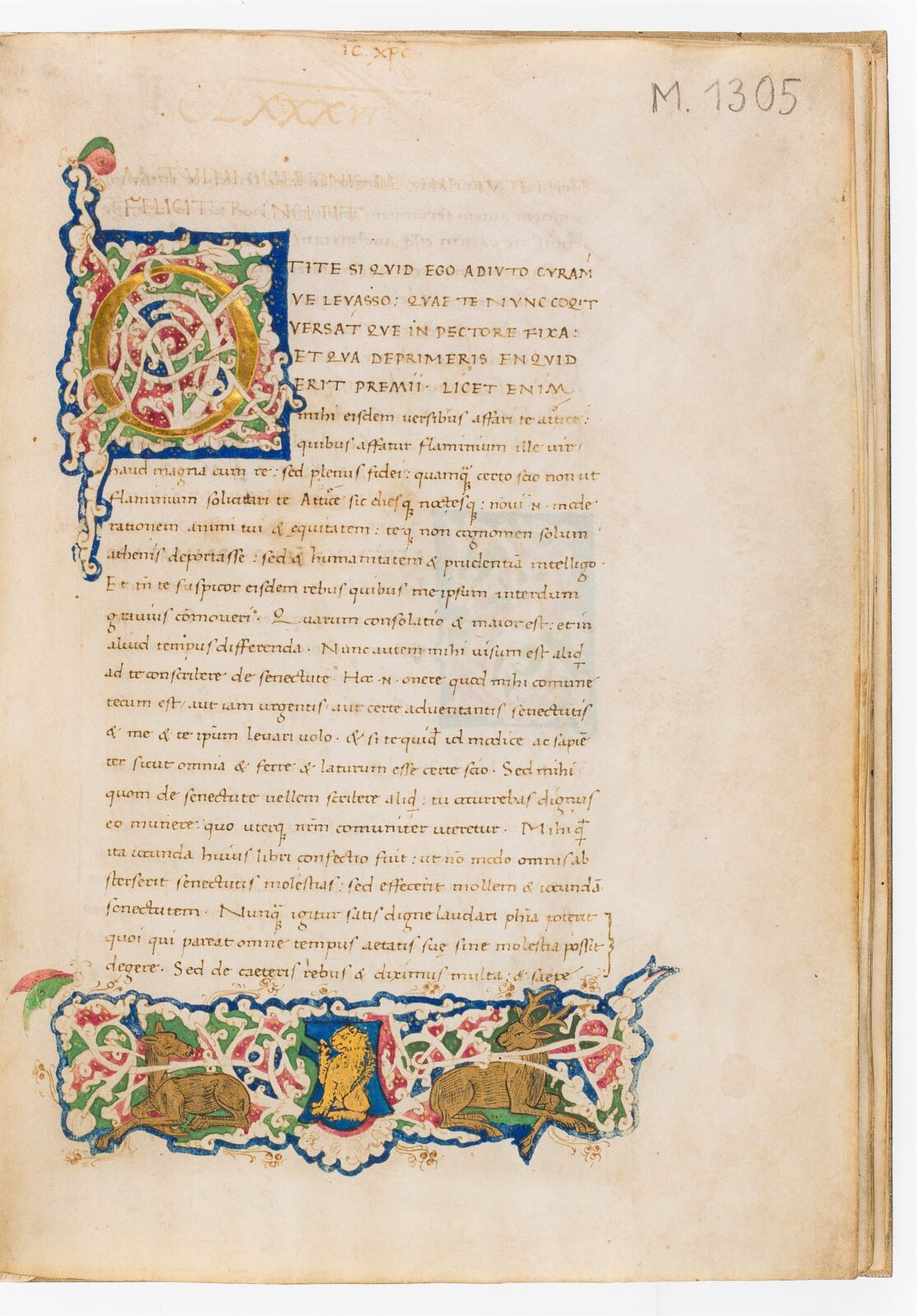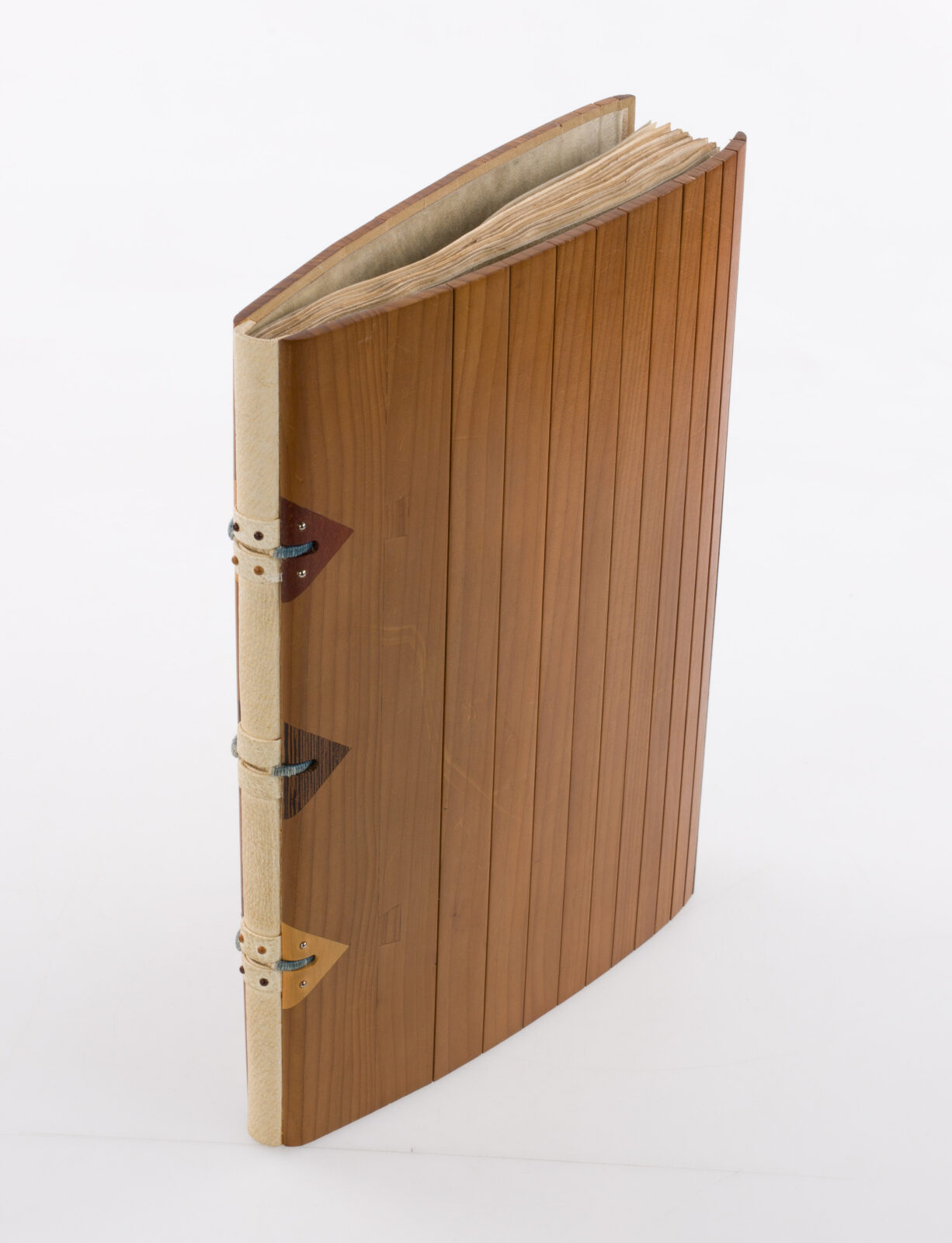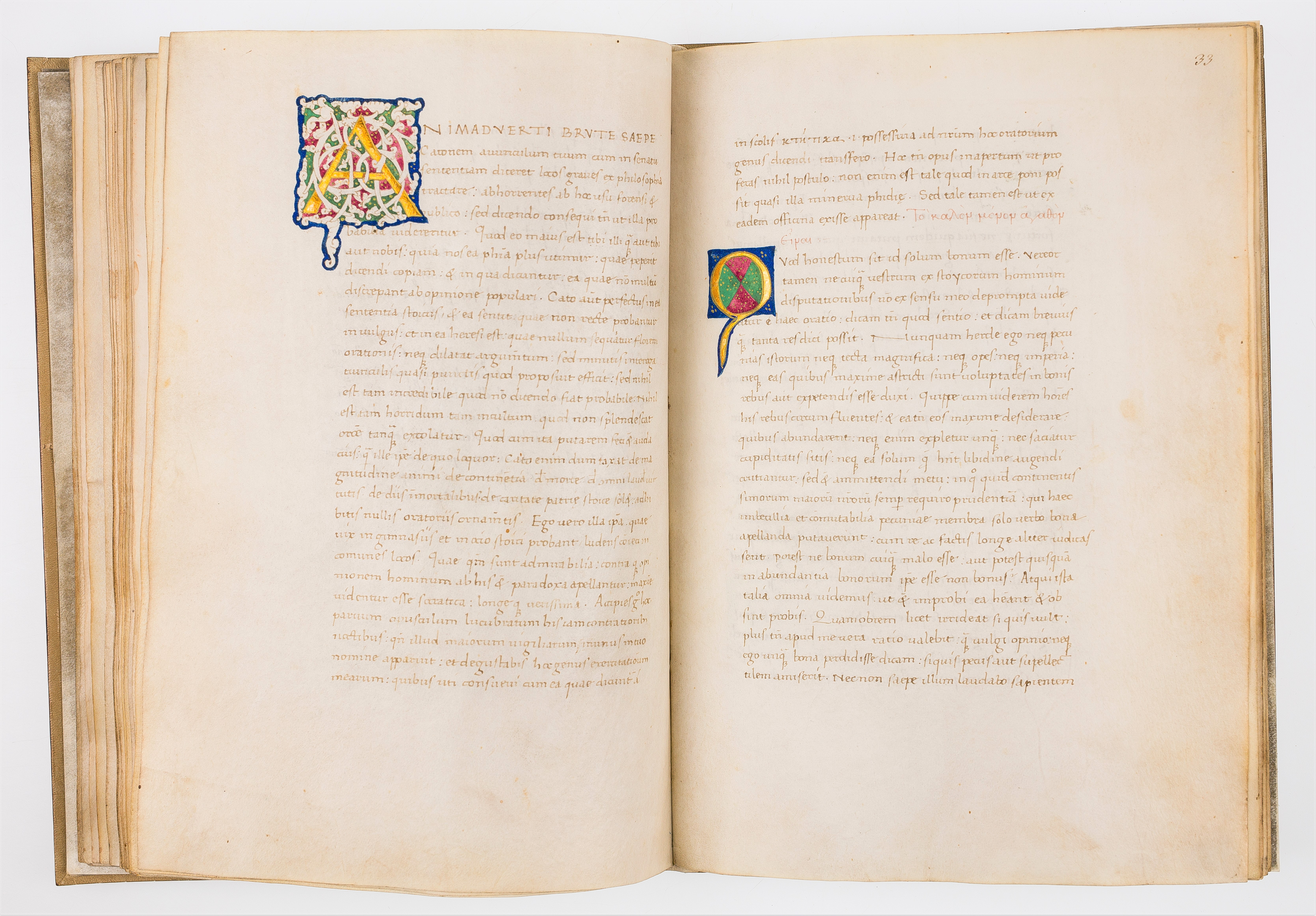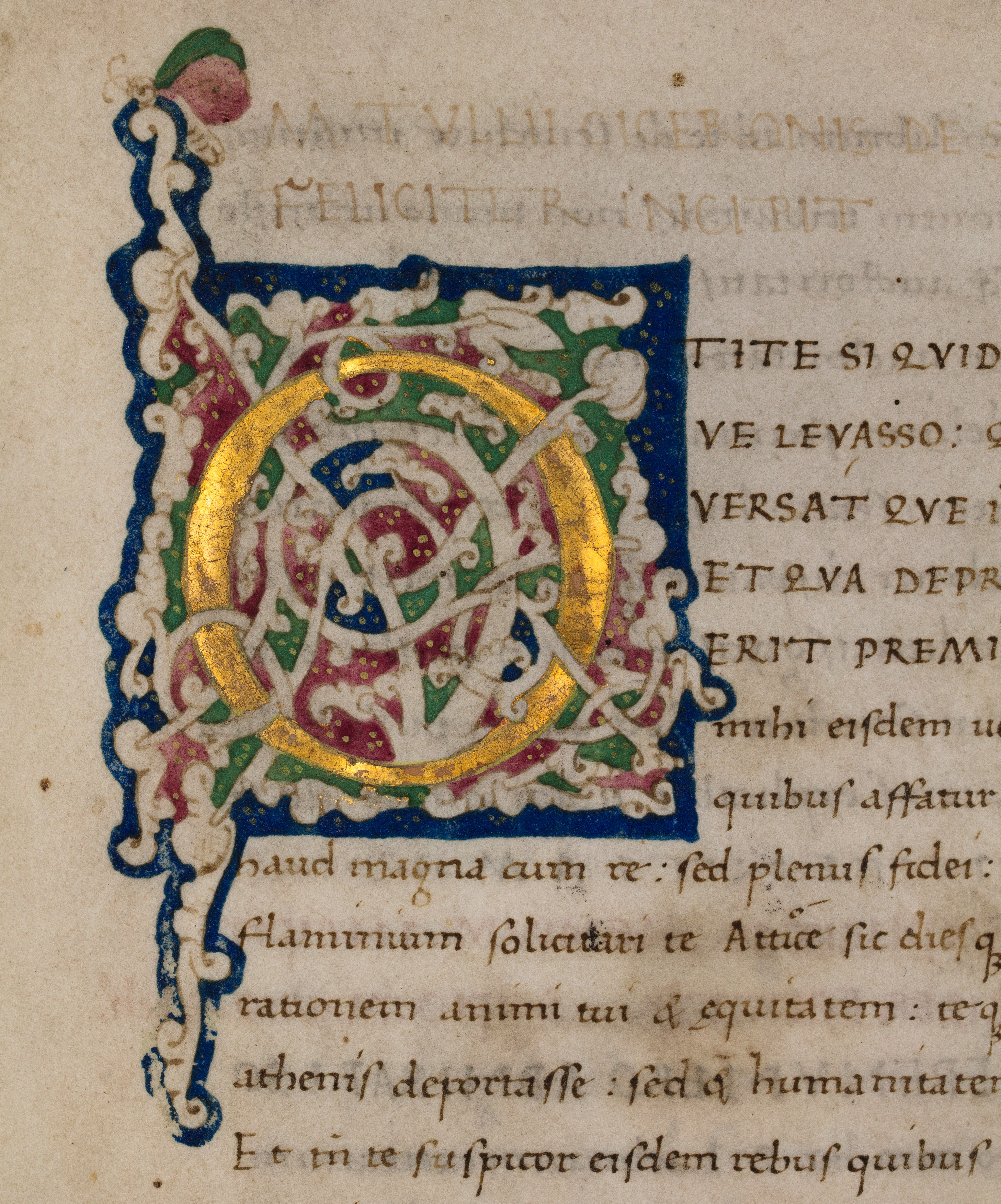
Cicero back in Wrocław!
The stolen manuscript comes back to Wrocław University Library’s collection. The priceless relic was stolen between 1961 and 1977. In 2021, an employee of the Manuscripts Department of Wrocław University Library recognized the stolen piece on the webpage of “Johnathan Hill Bookseller” – one of the antique bookshops in New York – where it was put on auction.
After collecting plentiful documentation confirming the identification of the manuscript (descriptions of old catalogs and a 1954 microfilm), Wrocław University Library informed the Department of Restitution of Cultural Assets in the Ministry of Culture and National Heritage. Antique Dealer Johnathan Hill, after going through the documentation, returned the manuscript. The ceremonial handover to Wrocław University Library took place on March 10, 2023, in the Ministry of Culture and National Heritage headquarters in Warsaw.
The manuscript is an ornate philosophical piece by Marcus Tullius Cicero. It presumably originated in 1450 Florence. It was written in Latin with quotes in ancient Greek. It has 42 cards and three of Cicero’s philosophical works: “Stoic Paradoxes”, “Cato the Elder on Old Age” dialogue, and “De Amicitia” dialogue.
It is written in “littera humanistica” on parchment with a wide margin and a “Proto-Renaissance” ornate. Big golden drop caps on red, green, and blue backgrounds additionally decorated with “a bianchi girari” [white vine-stem] are the main adornment. Such ornate was used in Florence in quattrocento and that is where the manuscript presumably originated. Starkness of the ornate stands in contrast with late medieval Italian manuscript decorations. It was a way for Florentine classical scholars to get closer to antiquity (Picture 1 in the gallery at the bottom of the page. Card 1r. The beginning of Cicero’s “Cato the Elder on Old Age” dialogue).
There is a lion with deer and butterflies at the bottom margin of the first card which probably is a crest of the first and unidentified owner of the manuscript (Picture 2 in the gallery).
According to the documentation, the manuscript was ironshod in Renaissance integument with knobs and blind embossings. Unfortunately, only fragments of it survived. After the robbery, the manuscript was found in France where Jean de Gonet, a famous bookbinder, made it a new integument (Picture 3 in the gallery).
In the 80s, Jean de Gonet revolutionized the bookbinding technique, introducing new solutions and materials like carved wood, metal, and printed leather. His works, presented at many exhibitions in Europe and America, have been an inspiration for other bookbinders. Therefore, Jean de Gonet’s integument is a real collector’s item in collections of Polish libraries which adds the manuscript value.
Marcus Tullius Cicero’s code is protected by lining made of wooden laths and decorative wooden inserts of different kinds. The spine is covered with pig leather and the manuscript’s uncovered stitches are studded.
Learn more about Jean de Gonet on Jacek Tylkowski’s bookbinding webpage.
The name of the French bookbinding master is written in small letters on the cover (Picture 4).
C. 32v-33r. The beginning of “Stoic Paradoxes”. In this work, Cicero tries to explain six famous stoic adages, which seem to be paradoxical. In the manuscript, the introduction starts with a big vine-stem drop cap. The first chapter about the “Virtue is the only good” paradox starts on the next card, where, there is a smaller, golden drop cap “Q” on red, green, and blue background (Picture 5).
Drop cap on Card 1v (Picture 6). Pictures from the ceremonial handover of the manuscript to Wrocław University Library are available on the Ministry of Culture and National Heritage’s webpage.
Translated by Anna Kobylowska (student of English Studies at the University of Wrocław) as part of the translation practice.









